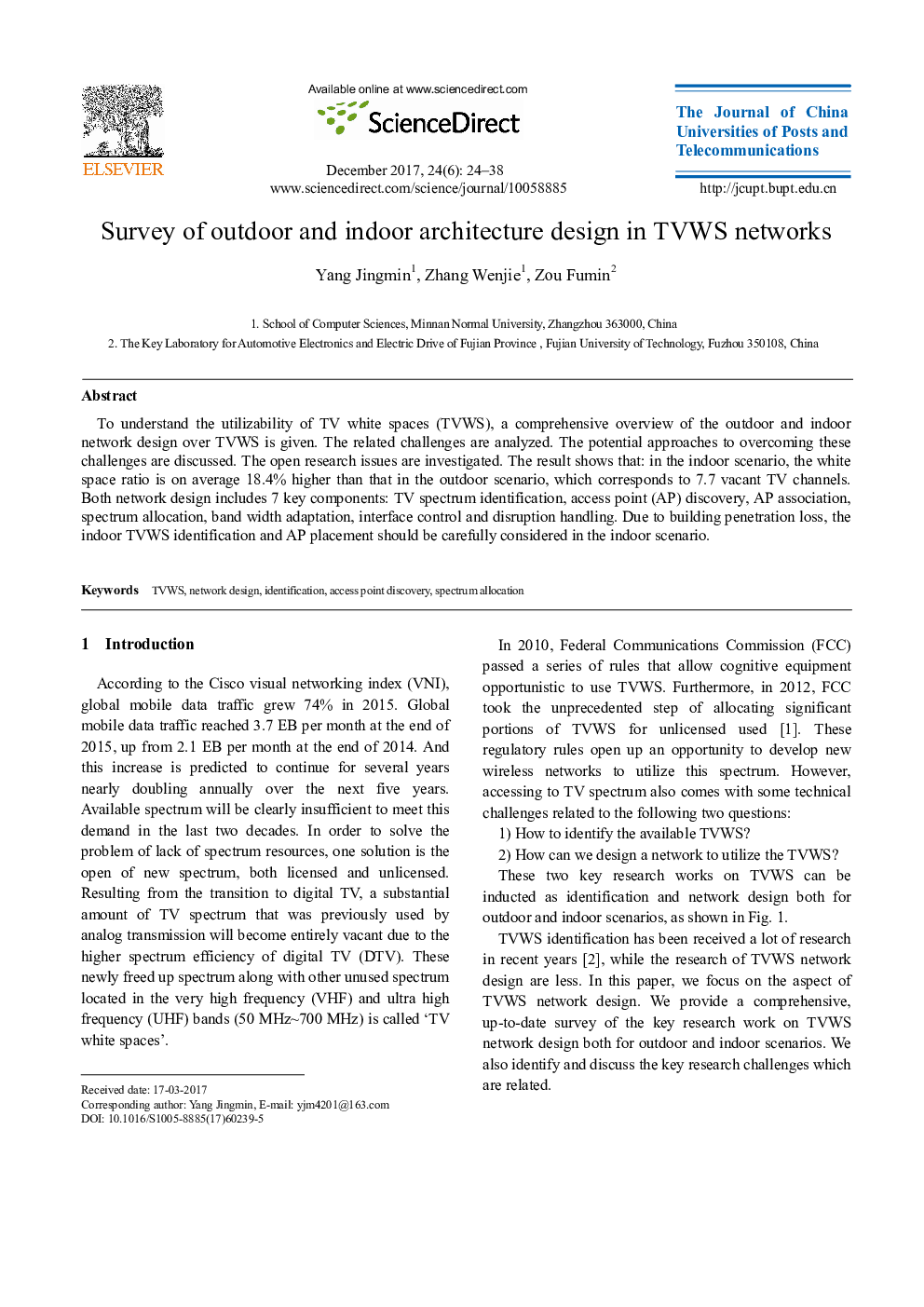| Article ID | Journal | Published Year | Pages | File Type |
|---|---|---|---|---|
| 7116667 | The Journal of China Universities of Posts and Telecommunications | 2017 | 15 Pages |
Abstract
To understand the utilizability of TV white spaces (TVWS), a comprehensive overview of the outdoor and indoor network design over TVWS is given. The related challenges are analyzed. The potential approaches to overcoming these challenges are discussed. The open research issues are investigated. The result shows that: in the indoor scenario, the white space ratio is on average 18.4% higher than that in the outdoor scenario, which corresponds to 7.7 vacant TV channels. Both network design includes 7 key components: TV spectrum identification, access point (AP) discovery, AP association, spectrum allocation, band width adaptation, interface control and disruption handling. Due to building penetration loss, the indoor TVWS identification and AP placement should be carefully considered in the indoor scenario.
Related Topics
Physical Sciences and Engineering
Engineering
Electrical and Electronic Engineering
Authors
Yang Jingmin, Zhang Wenjie, Zou Fumin,
